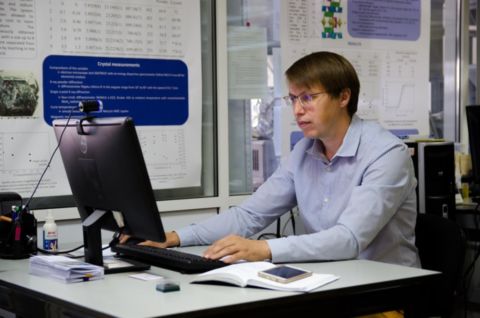Scientists from South Ural State University can "tune" the physical properties of a substance depending on the purpose of its application. For example, they created materials that can withstand high temperatures for temperature sensors. The project to create high-entropy crystal structures based on magnetoplumbite was supported by the Russian Science Foundation. An article on this study was published in the highly rated Journal of the European Ceramic Society (Scopus, Q1).
New material for better devices
The properties of the material greatly affect the performance of the devices this material is used in. Scientists of the Department of Materials Science, Physical and Chemical Properties of Materials use high-entropy materials in their work.
“High-entropy materials contain at least five components, which allow varying the properties of the resulting material in wide ranges. If we add one or two alloying components to the original substance, we can modify the properties and structure of the substance in a certain way, but when we are dealing with a high-entropy system, we can add not one or two, but five or more alloying components, which allows us to vary the working material characteristics in a much wider range. High-entropy materials are currently a global trend in the field of materials science. Our group was the first to create high-entropy hexaferrite in the world,” Doctor of Chemistry, Professor Denis Vinnik explains.
Thus, scientists are developing methods for obtaining material with specified properties that are necessary for a specific use, that is, they can obtain special material for one specific application. Now there is no need to obtain a new material by combining several materials.
“You can take one and the same structure and change first the chemical composition and then the structure of the material to achieve the properties required for a particular device. For example, in barium hexaferrite, the Curie temperature at which it ceases to be a magnet is 450 °. In the monophase samples of high-entropy ceramics created by us based on magnetoplumbite, the temperature properties changed by more than 500 °. I would like to note that no one in the world created high-entropy magnetoplumbite yet, we were the first” Denis Vinnik says.

Scientists' interest in ferrites has grown significantly over the past twenty years. Researchers try to find ways to modify their properties. Scientists hope that the new substance will be in demand, for example, in the production of self-calibrating temperature sensors.
The growth in the number of developments and patents for inventions is provided for the national project Nauka, which should be implemented in Russia by 2024.
SUSU is a participant of the 5-100 Project intended to increase the competitiveness of Russian universities among the world's leading research and educational centers. Research in the field of materials science is one of the three strategic directions for the development of scientific and educational activities of South Ural State University, along with the ecology smart industry.




